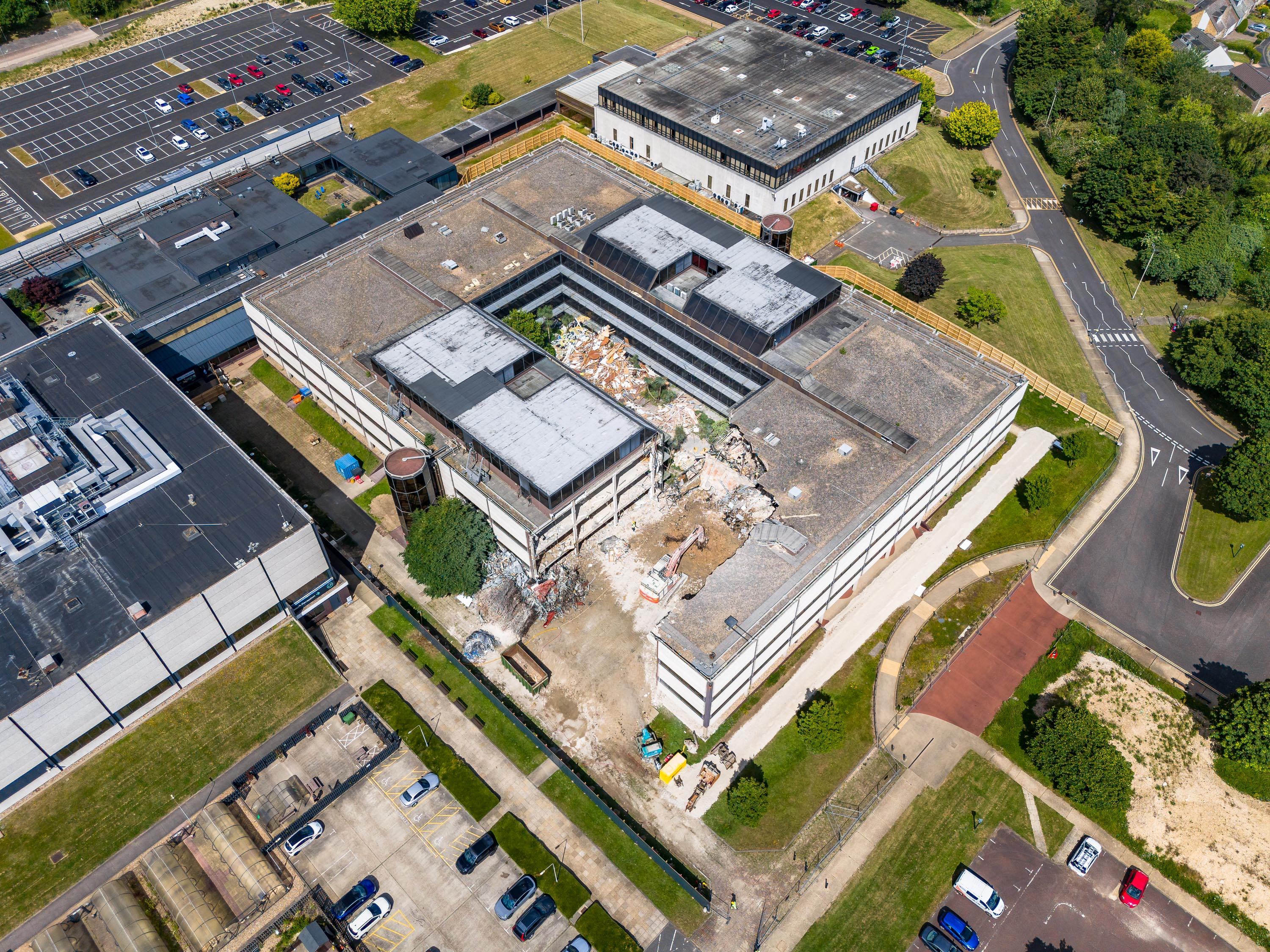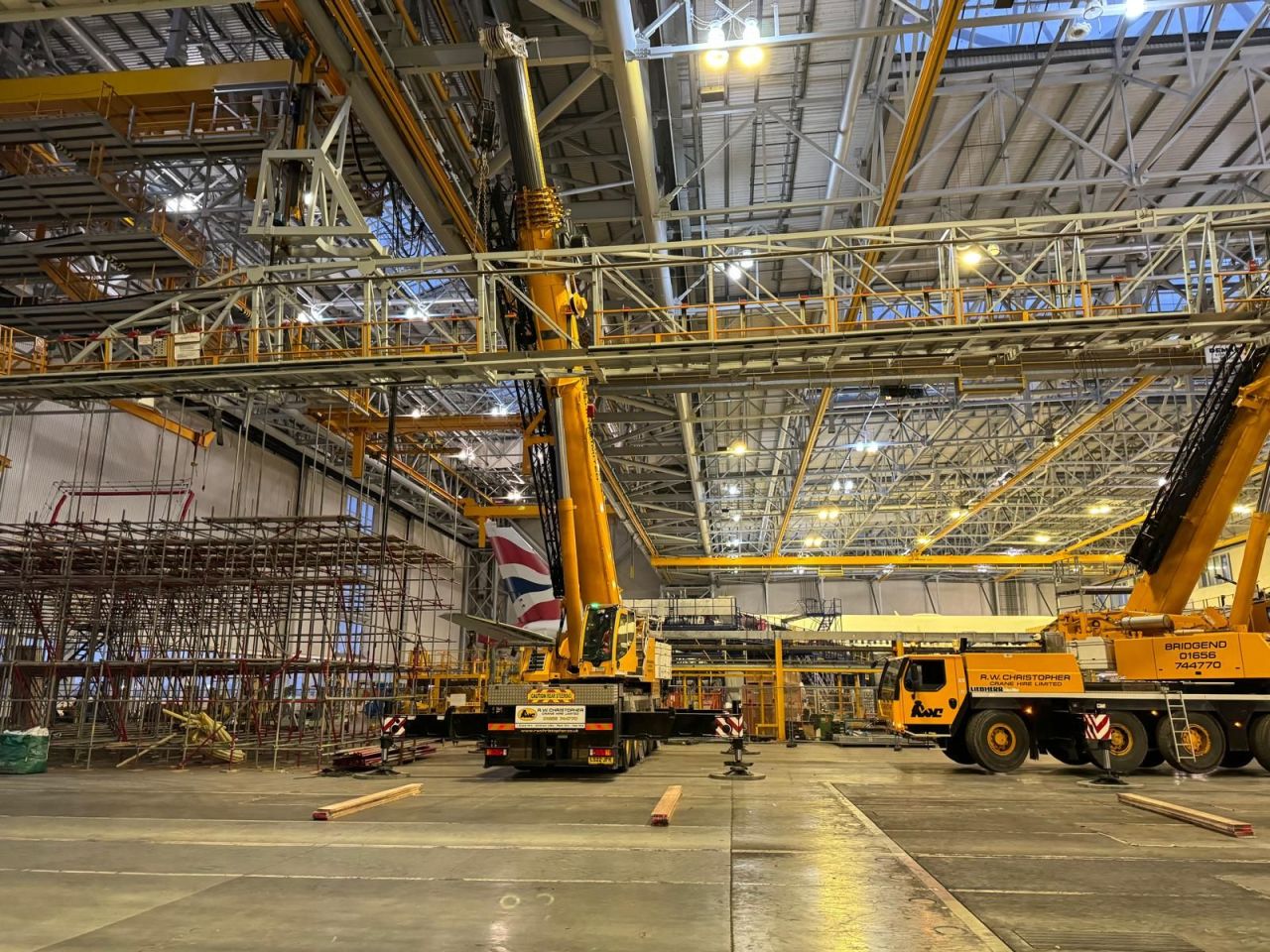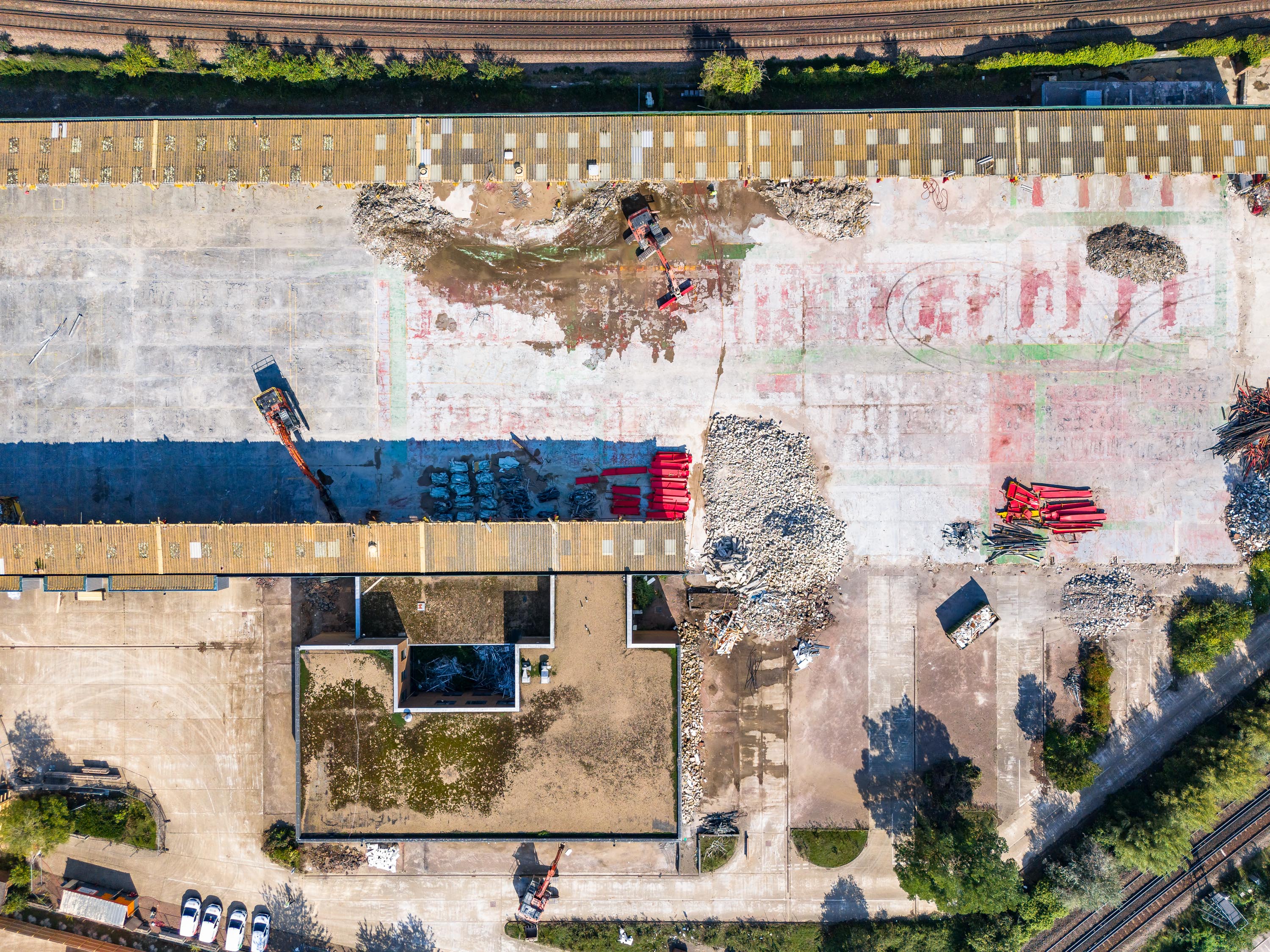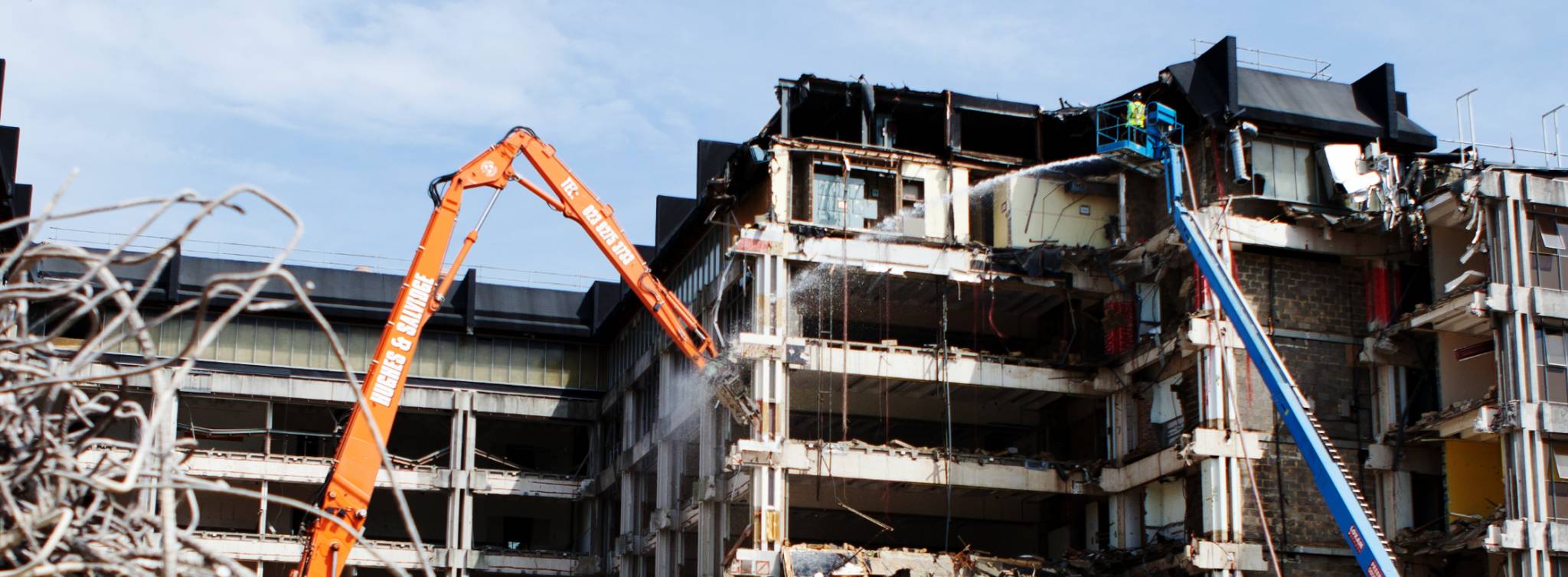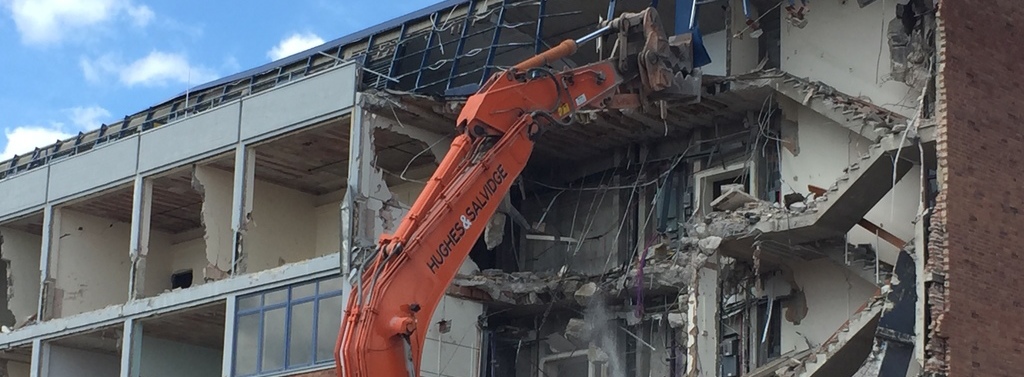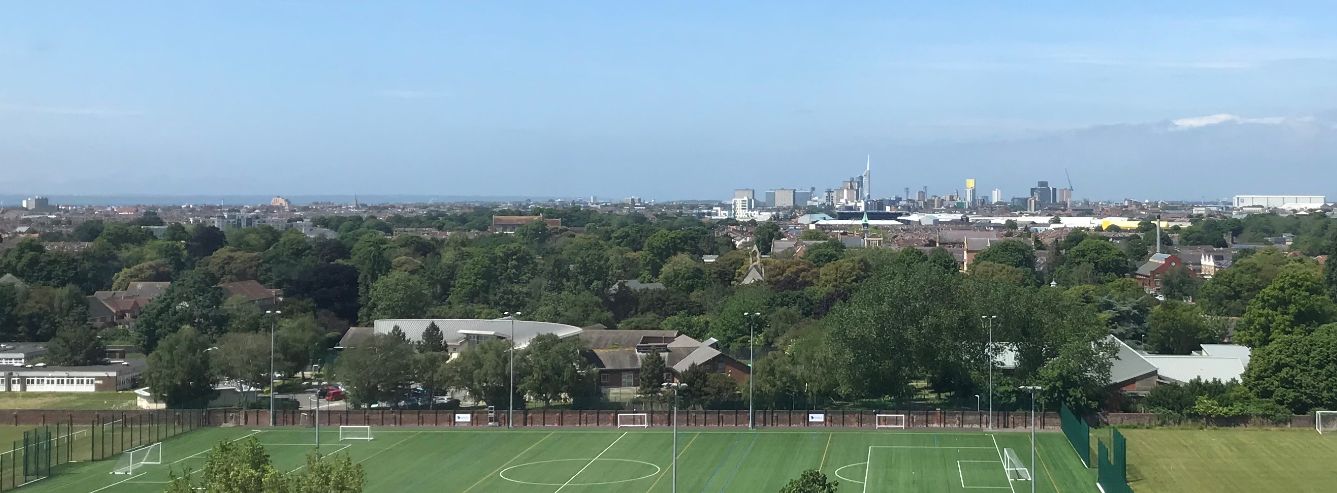Rusham Park, Egham
Egham
Critical environmental controls and measures in place
CAD sequencing used during tender and project stages
Hughes and Salvidge were appointed as Principal Contractor by Balfour Beatty to undertake the asbestos removal, soft strip, structural demo, and crushing/recycling on the site of office space and laboratories in Egham, which is owned by Royal Holloway, University of London.
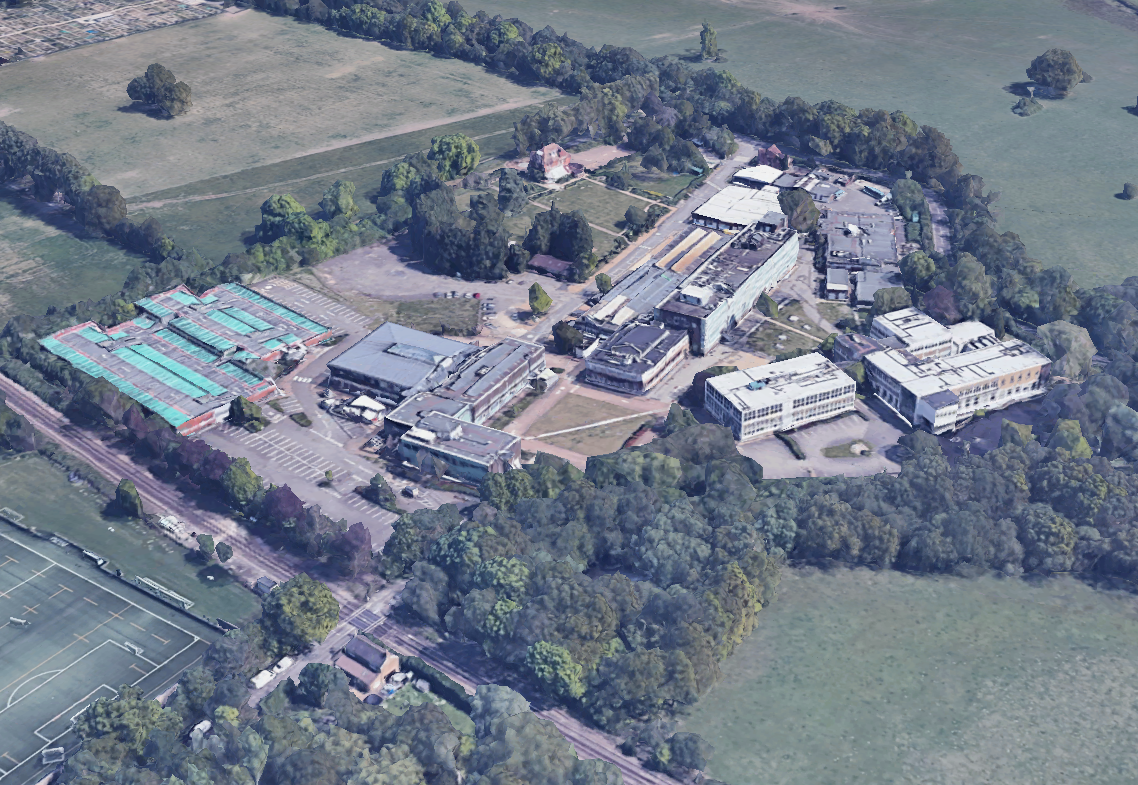
During the project, we encountered a few interesting challenges. These included the shape of local water courses and a floodplain, the protection of which was paramount in compliance with the Environmental Agency permit for the project, which required a lake to be protected from all debris.
Specific mechanical demolition techniques were used to ensure minimal impact on the key areas identified during the scoping of the works. With these works over, and even in the water, we also monitored ph levels throughout the project.
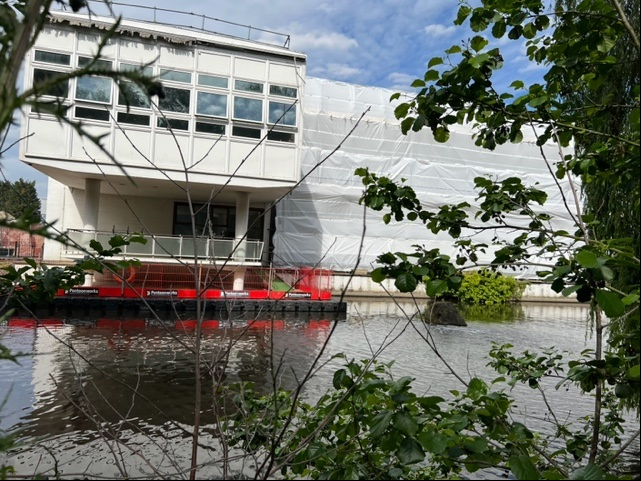
Water is only one element we monitored as we factored in the individuality of this project. We also considered endangered or unique species of wildlife and monitor various areas of the environment, including air quality, noise, vibrations, and wind speed and direction.
The soft strip phase involved the removal of all fixtures & fittings, furniture, carpet tiles, false ceilings, timber, services, cables, light fittings, insulation / lining boards within the structures to allow for the demolition and in order to minimise the amount of potential contaminants in the material to be crushed.
Each building was subject to a specific method of structurally demolition, based on the size and make up of the structure. During each phase of work, control measures were in place and updated to ensure the safety of everyone on site.
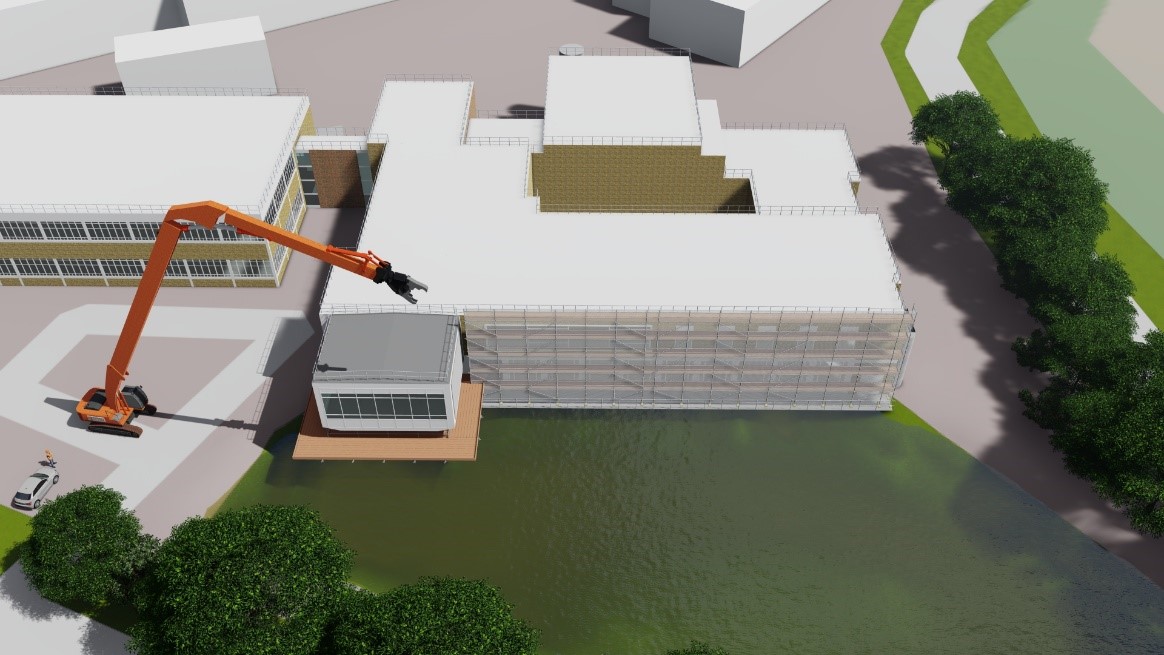
CAD imagery was also used to display the sequence of demolition; the floating pontoon can be seen beneath the portion of the building which extends over the lake. This 26-week programme of works was completed successfully using our ‘complete solution’ making sure that as much waste/metals and inert waste were recycled as possible.

